
Gøta: The Heartbeat of the Faroe Islands
Discover Gøta in the Faroe Islands: A blend of natural beauty, rich history, and vibrant culture, perfect for outdoor enthusiasts and culture seekers alike.
Gøta, nestled in the scenic landscapes of the Faroe Islands, offers a unique blend of natural beauty and cultural richness. This charming village is surrounded by towering mountains, lush green valleys, and the crystal-clear waters of the North Atlantic Ocean. The picturesque setting provides an ideal backdrop for outdoor activities such as hiking, bird watching, and coastal exploration. Beyond its stunning scenery, Gøta is steeped in history and tradition. The village is home to several historic sites, including the Gøtu Kirkja, a beautiful wooden church that dates back to the 19th century. Visitors can also explore the local museum, which showcases artifacts and exhibits that tell the story of the village's past and its people. Gøta is also known for its vibrant cultural scene. The village hosts numerous events throughout the year, including the popular G! Festival, which attracts music lovers from around the world. This lively event features a diverse lineup of local and international artists, creating an unforgettable experience for attendees. Additionally, Gøta's local artisans and craftsmen offer a range of handmade goods, from traditional Faroese knitwear to contemporary art pieces, providing visitors with unique souvenirs to remember their trip by.
Local tips in Gøta
- Check the weather forecast before planning outdoor activities, as the weather can change rapidly.
- Visit during the G! Festival in July to experience the village's lively music scene.
- Wear sturdy hiking boots for exploring the rugged terrain around Gøta.
- Try local dishes like fermented fish and lamb, which are a staple of Faroese cuisine.
- Bring binoculars for bird watching, as the area is home to a variety of seabirds.
Gøta: The Heartbeat of the Faroe Islands
Gøta, nestled in the scenic landscapes of the Faroe Islands, offers a unique blend of natural beauty and cultural richness. This charming village is surrounded by towering mountains, lush green valleys, and the crystal-clear waters of the North Atlantic Ocean. The picturesque setting provides an ideal backdrop for outdoor activities such as hiking, bird watching, and coastal exploration. Beyond its stunning scenery, Gøta is steeped in history and tradition. The village is home to several historic sites, including the Gøtu Kirkja, a beautiful wooden church that dates back to the 19th century. Visitors can also explore the local museum, which showcases artifacts and exhibits that tell the story of the village's past and its people. Gøta is also known for its vibrant cultural scene. The village hosts numerous events throughout the year, including the popular G! Festival, which attracts music lovers from around the world. This lively event features a diverse lineup of local and international artists, creating an unforgettable experience for attendees. Additionally, Gøta's local artisans and craftsmen offer a range of handmade goods, from traditional Faroese knitwear to contemporary art pieces, providing visitors with unique souvenirs to remember their trip by.
When is the best time to go to Gøta?
Iconic landmarks you can’t miss
Múlafossur Waterfall
Experience the breathtaking beauty of Múlafossur Waterfall, a must-see natural wonder in the heart of the Faroe Islands.
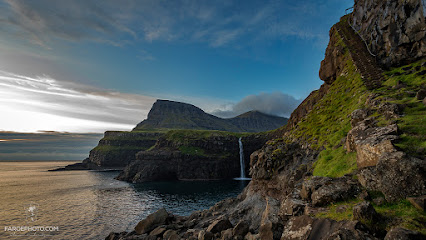
Fossá
Explore the captivating beauty of Fossá, the largest waterfall in the Faroe Islands, surrounded by stunning landscapes and serene nature.
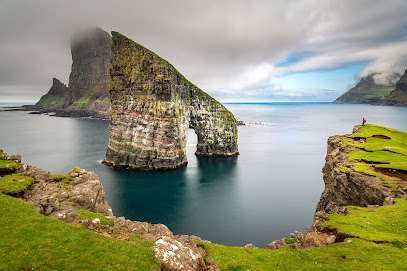
Skansin
Explore Skansin, Tórshavn's historic fortress offering stunning views, rich maritime history, and a peaceful escape into the natural beauty of the Faroe Islands.
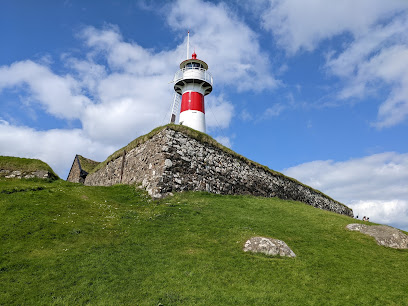
Katrina Christiansen
Experience the essence of Scandinavian cuisine at Katrina Christiansen, a top restaurant in Tórshavn, showcasing fresh, local ingredients and breathtaking views.
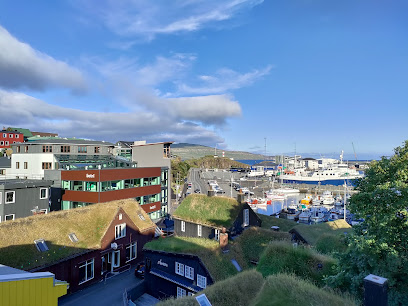
Gjaargardur Guesthouse Gjogv
Experience authentic Faroese cuisine at Gjaargardur Guesthouse in Gjogv, where stunning views meet culinary excellence in a warm and inviting atmosphere.
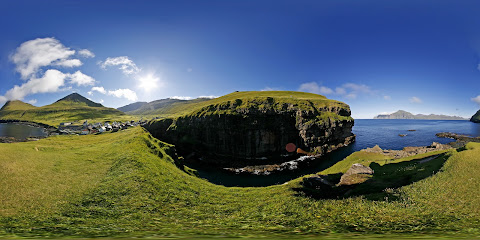
The Seal Woman (Kópakonan)
Explore the mesmerizing Seal Woman (Kópakonan) sculpture in Mikladalur, where legend meets breathtaking coastal beauty in the heart of the Faroe Islands.

The National Gallery of The Faroe Islands
Discover the National Gallery of The Faroe Islands, where local artistry meets international inspiration in Tórshavn's cultural landscape.
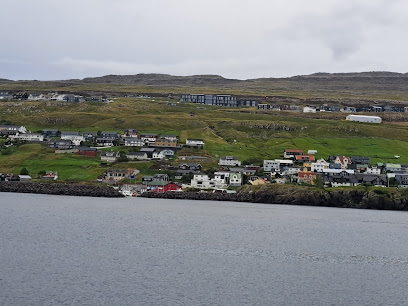
Tjóðsavnið (Faroe Islands National Museum)
Discover the essence of the Faroe Islands at Tjóðsavnið, where history, culture, and nature intertwine beautifully.
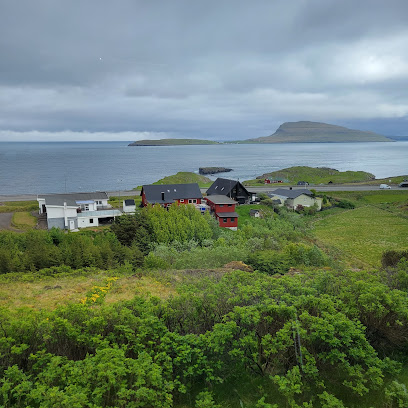
Kallur Lighthouse
Discover the breathtaking landscapes and serene beauty of Kallur Lighthouse on Kalsoy Island, a must-visit gem in the Faroe Islands.
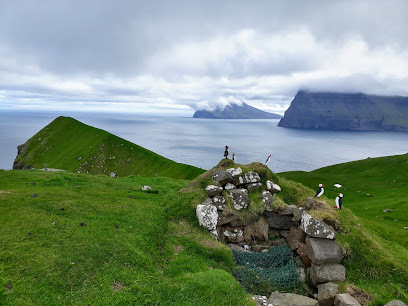
Toscana
Experience the delightful fusion of Italian cuisine, fresh seafood, and premium steaks at Toscana in Tórshavn.
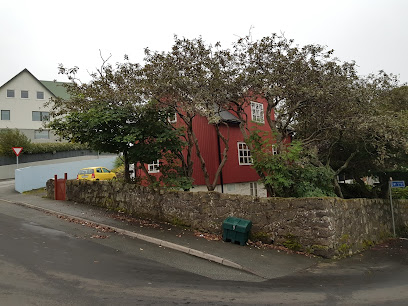
Dúvugarðar Museum & Café
Discover the Dúvugarð Museum & Café in Saksun: Experience the rich heritage and stunning views of the Faroe Islands while enjoying local cuisine.
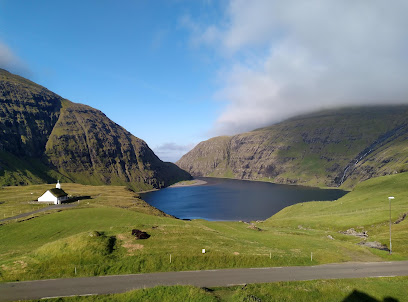
Bøsdalafossur Waterfall
Experience the breathtaking beauty of Bøsdalafossur Waterfall, a must-see natural wonder in the Faroe Islands, perfect for nature lovers and adventurers.
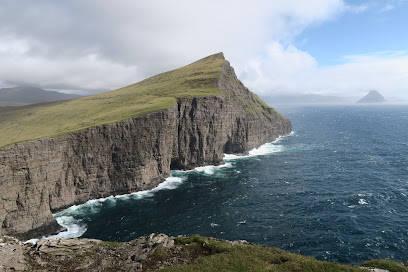
Brell Café
Discover Brell Café, where artisan coffee meets local delicacies in the heart of Tórshavn, Faroe Islands.
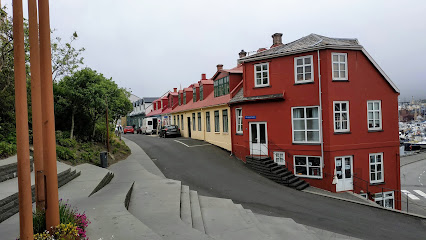
Visit Torshavn
Experience Torshavn, the enchanting capital of the Faroe Islands, where history, culture, and stunning landscapes converge for an unforgettable journey.
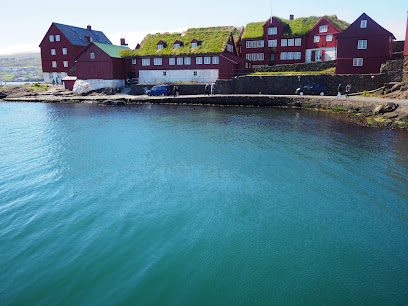
Klakkur
Experience the breathtaking beauty of Klakkur, a must-visit peak in the Faroe Islands, offering stunning views and unforgettable hiking adventures.
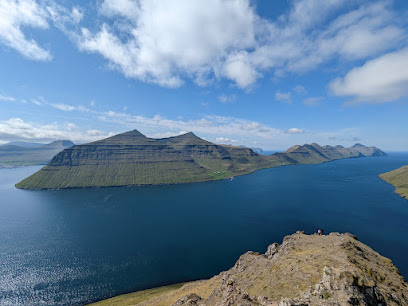
Unmissable attractions to see
Gjógv Natural Harbour
Experience the stunning beauty of Gjógv Natural Harbour in the Faroe Islands, a perfect blend of nature and culture awaits you.
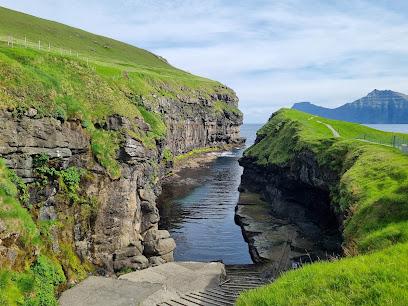
The Seal Woman (Kópakonan)
Discover the story of The Seal Woman at Kópakonan, a captivating sculpture in Mikladalur, surrounded by stunning Faroese landscapes.
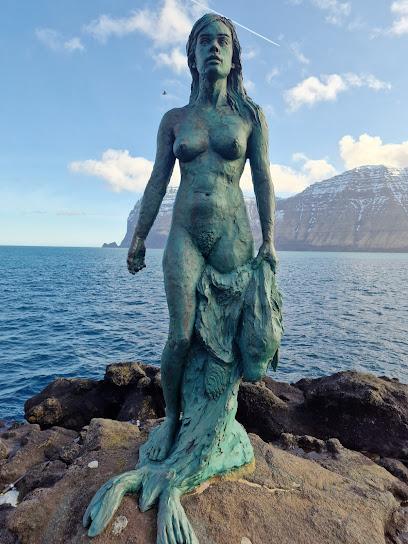
Kallur Lighthouse
Experience breathtaking views and stunning landscapes at Kallur Lighthouse, a must-see destination on Kalsoy Island in the Faroe Islands.
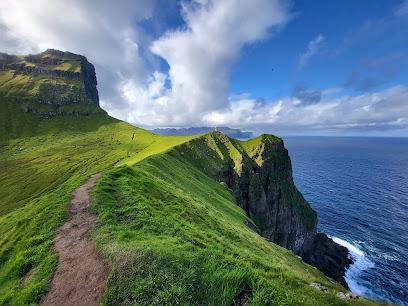
Tjørnuvik Beach
Explore the breathtaking Tjornuvik Beach, where rugged cliffs meet sandy shores in the stunning Faroe Islands, perfect for relaxation and scenic adventures.
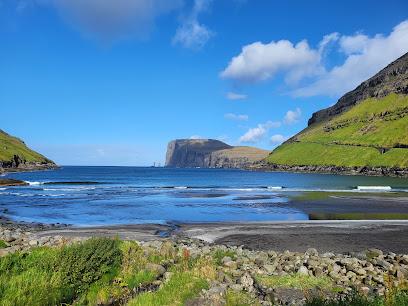
Svartafoss Waterfall
Experience the breathtaking beauty of Svartafoss Waterfall, a natural wonder in the Faroe Islands with stunning basalt columns and serene landscapes.
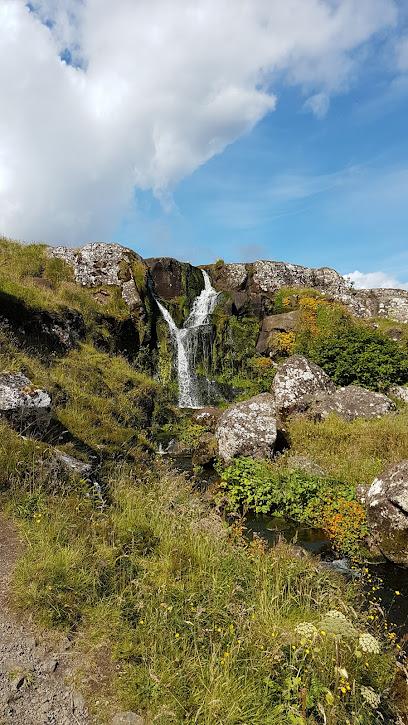
Risin og Kellingin viewpoint
Experience the enchanting beauty of Risin og Kellingin viewpoint, where folklore meets breathtaking landscapes in the heart of the Faroe Islands.
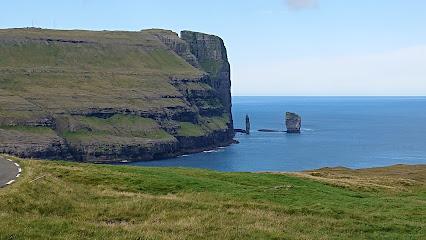
Djúpumýra Stadium
Explore the vibrant Djúpumýra Stadium in Klaksvík, a cultural hub for sports and community events in the stunning Faroe Islands.
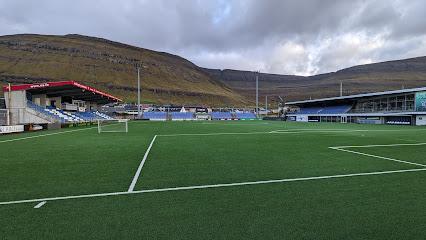
Eysturoy Tunnel
Explore the Eysturoy Tunnel: a stunning engineering marvel connecting the scenic islands of the Faroe Islands with breathtaking views along the way.
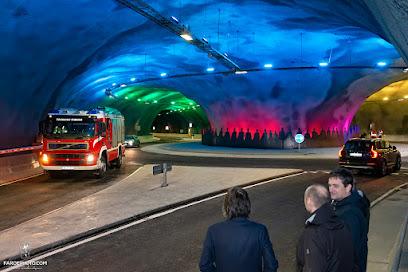
Visit Eysturoy - Fuglafjørður / Kunningarstovan í Fuglafirði
Experience the rich culture of Eysturoy at Kunningarstovan í Fuglafirði, a hub for art, crafts, and local heritage in the Faroe Islands.
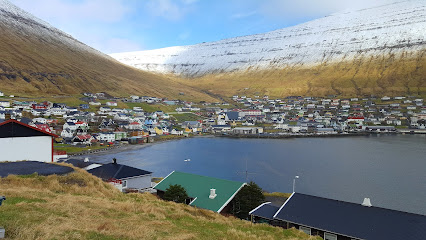
Yviri við Strond
Discover the breathtaking coastal beauty of Yviri við Strond in Tórshavn, a serene escape into the wild charm of the Faroe Islands.

Gjógv
Discover the breathtaking landscapes and rich cultural heritage of Gjógv, a hidden gem in the Faroe Islands known for its stunning cliffs and traditional architecture.
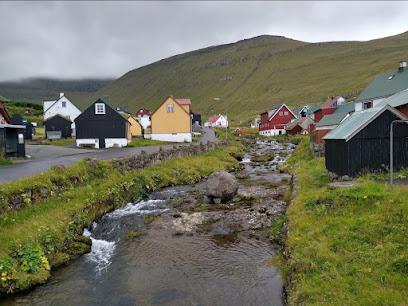
Tjørnuvík
Explore Tjørnuvík, a picturesque village in the Faroe Islands, famous for its stunning landscapes, Viking heritage, and serene coastal beauty.
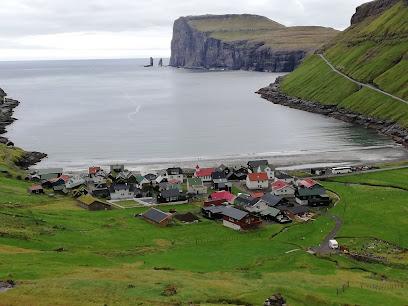
Vestmanna
Explore the mesmerizing cliffs, vibrant birdlife, and rich culture of Vestmanna in the stunning Faroe Islands.
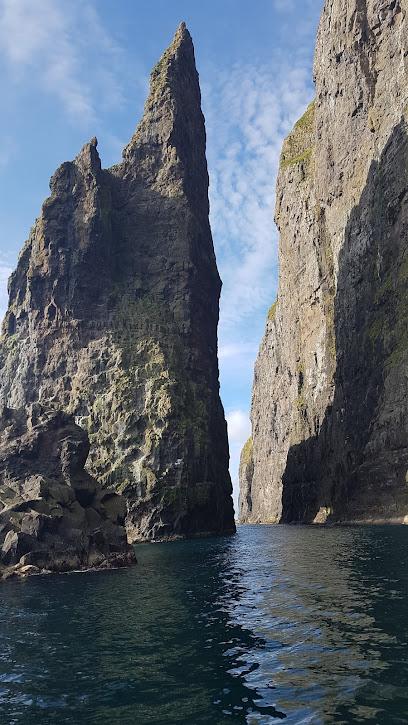
Kirkjubøur
Explore Kirkjubøur, the historic heart of the Faroe Islands, with its ancient ruins, stunning landscapes, and rich cultural heritage.

Essential places to dine
Fríða Kaffihús
Discover authentic Faroese flavors at Fríða Kaffihús in Klaksvík - where history meets culinary delight.
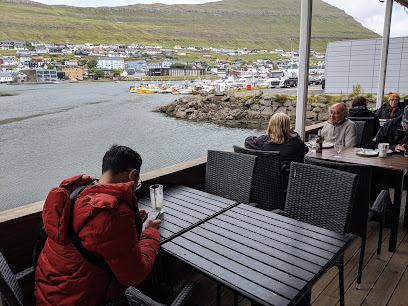
Katrina Christiansen
Discover authentic Scandinavian cuisine at Katrina Christiansen in Tórshavn - where local ingredients meet culinary artistry.
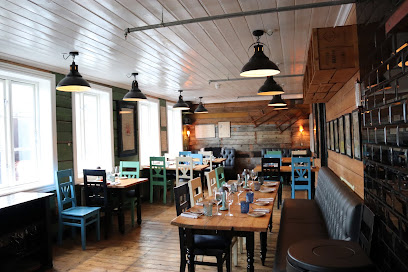
Angus Steakhouse
Savor succulent steaks and exquisite flavors at Angus Steakhouse in Tórshavn - a culinary gem of the Faroe Islands.
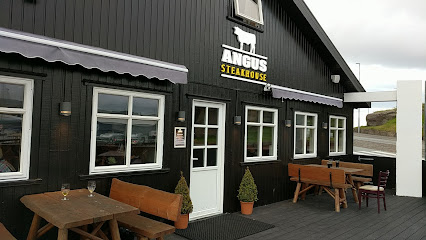
Áarstova
Experience authentic Faroese cuisine at Áarstova in Tórshavn – where tradition meets flavor in every dish.
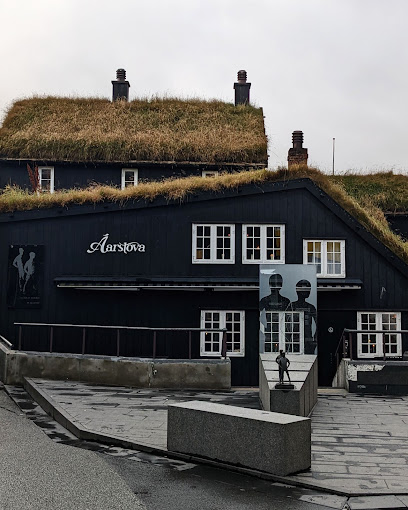
Barbara Fish House
Experience authentic Faroese cuisine at Barbara Fish House in Tórshavn - where fresh seafood meets breathtaking coastal views.
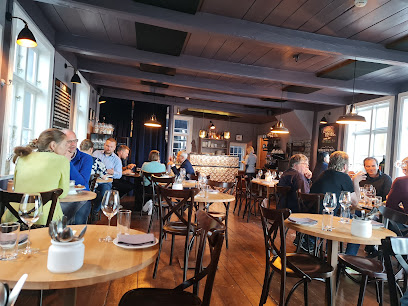
Toscana
Discover Toscana in Tórshavn: where authentic Italian cuisine meets fresh local seafood in an inviting atmosphere.
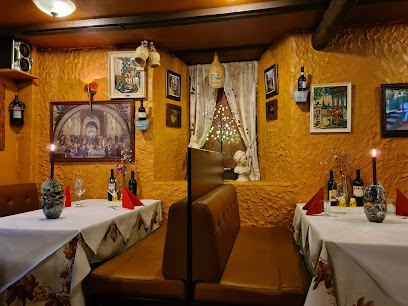
Rose's Restaurant & Catering
Experience authentic Faroese cuisine at Rose's Restaurant & Catering in Ljósá - where local flavors meet warm hospitality.

Amarant
Discover the charm of Amarant in Klaksvík - a family-friendly bakery and café offering delightful treats amidst stunning Faroese scenery.
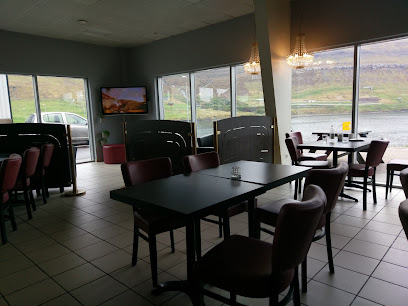
Angus Steakhouse Klaksvík
Experience premium steaks and authentic Faroese flavors at Angus Steakhouse Klaksvík, where every meal is crafted with passion and quality.
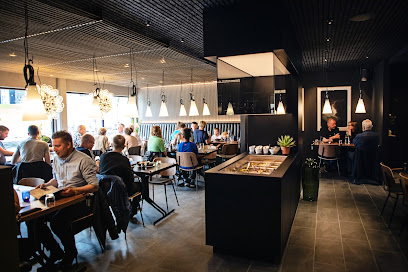
Fisk og Kips
Experience authentic Faroese fish & chips at Fisk og Kips in Tórshavn – where local flavors meet casual dining.
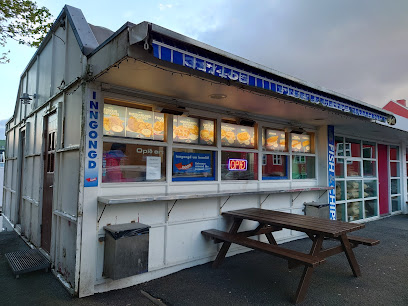
Kafe Umami
Experience unique Faroese cuisine at Kafe Umami in Tórshavn - where local flavors meet international flair.

Bitin
Discover authentic Faroese flavors at Bitin in Tórshavn – where traditional Scandinavian cuisine meets local ingredients.
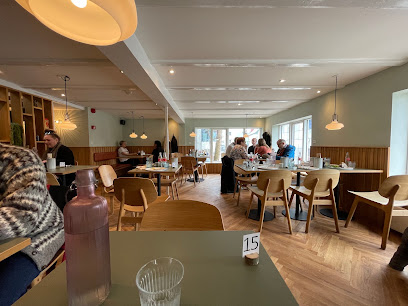
OY Brewing
Experience the best craft beer and local cuisine at OY Brewing - Tórshavn's premier brewpub offering unique flavors in a cozy atmosphere.
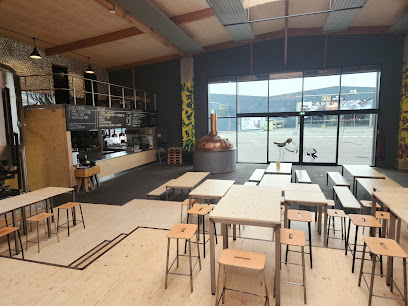
Suppugarðurin
Discover authentic Japanese flavors at Suppugarðurin in Tórshavn - where every bowl of ramen tells a delicious story.
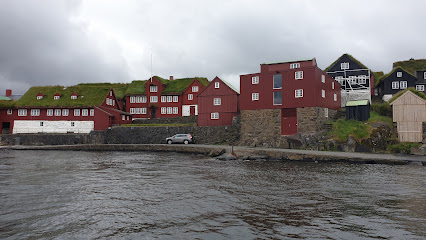
Muntra
Savor authentic Faroese cuisine at Muntra in Fuglafjørður, where fresh local ingredients meet warm hospitality.
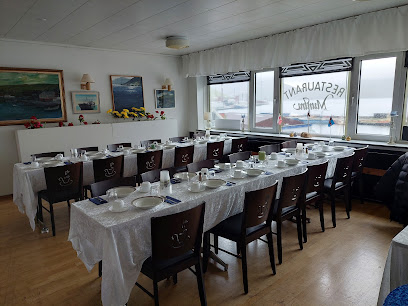
Markets, malls and hidden boutiques
Navia (yarn)
Explore Navia, a knit shop in Toftir, Faroe Islands, offering premium yarns and local craftsmanship perfect for knitting enthusiasts.
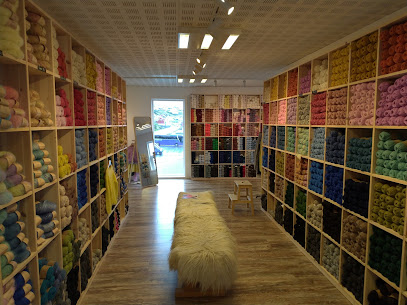
Rúsdrekkasøla Landsins - Saltangará
Explore Rúsdrekkasøla Landsins in Saltangará for an exceptional selection of local and international beverages in the heart of the Faroe Islands.
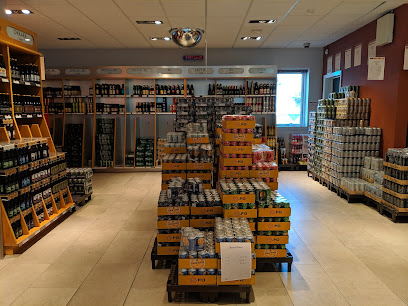
FK fuglafjørður
Discover local flavors and essentials at FK Fuglafjørður, a charming grocery store in the heart of the Faroe Islands, perfect for tourists.
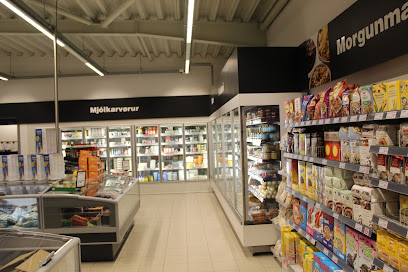
Á við Norðskála
Discover the essence of Faroese daily life at Á við Norðskála, your go-to grocery store for local flavors and everyday essentials in Oyrarbakki.
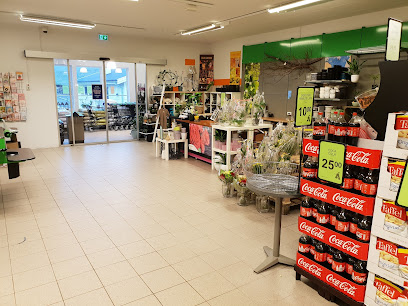
Guðrun & Guðrun
Discover sustainable fashion and unique Faroese designs at Guðrun & Guðrun, a must-visit clothing store in Tórshavn, Faroe Islands.
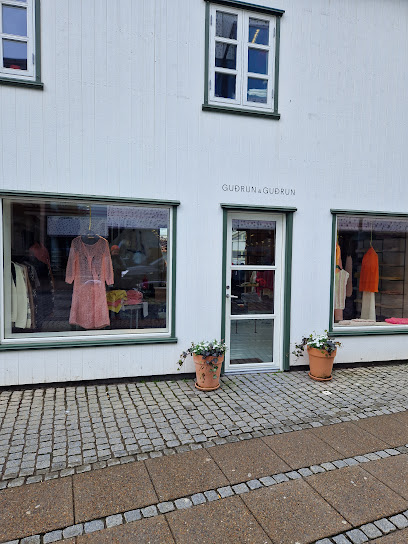
PE Gøta
Discover PE Gøta, the supermarket in Nordragota offering fresh local produce and international goods for all your culinary needs in the Faroe Islands.
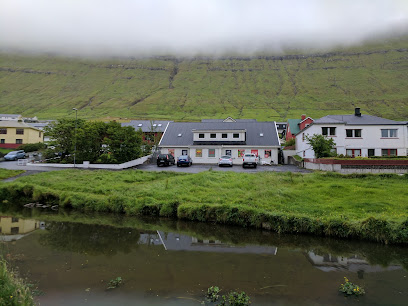
A shop
Experience local flavors and international products at A Handil, Klaksvík's largest supermarket, perfect for all your shopping needs.
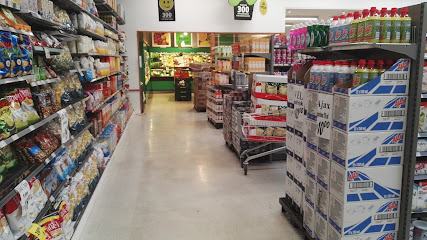
Børge
Explore authentic Faroese flavors at Børge, Kollafjørður's charming grocery store offering fresh produce and local delicacies.
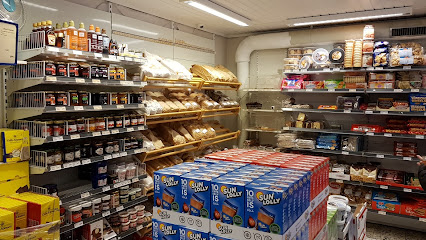
Á Sandoyggin
Explore the flavors of the Faroe Islands at Á Sandoyggin, your local grocery store in Skopun, offering fresh produce and traditional delicacies.
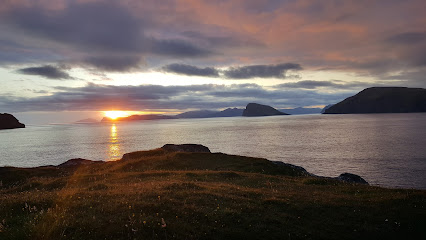
Norðoya Heimavirki
Explore the charm of Norðoya Heimavirki, a clothing store in Klaksvík offering exquisite handmade knitwear reflecting Faroese culture.
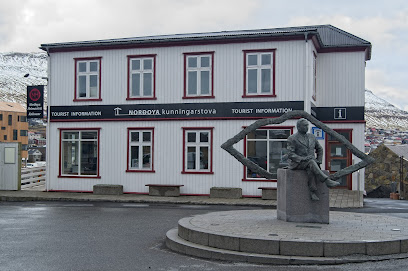
Ullvøruhúsið
Discover the finest Faroese wool at Ullvøruhúsið in Tórshavn, where traditional craftsmanship meets modern design.
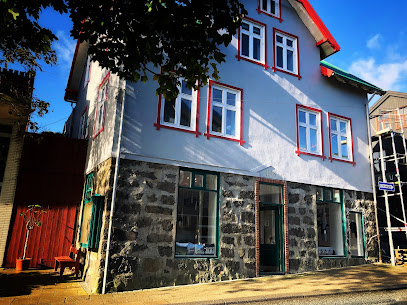
Føroya Heimavirkisfelag
Explore the heart of Tórshavn with traditional Faroese knitwear at Føroya Heimavirkisfelag, where quality meets local heritage.
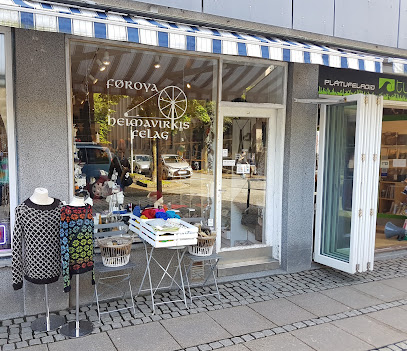
Fjord by Suffía Nón
Explore the charm of Faroese culture at Fjord by Suffía Nón - a delightful gift shop offering unique souvenirs and local artisan creations.
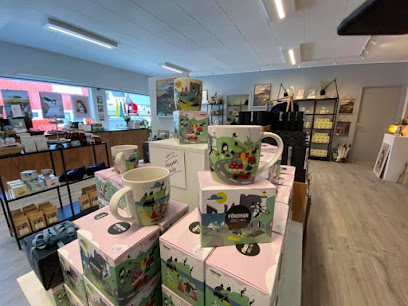
Kalasin Asia Shop (KAS)
Experience authentic Asian flavors in Tórshavn at Kalasin Asia Shop, your go-to destination for quality Asian groceries.

Snældan
Explore unique Faroese fashion at Snældan, a charming clothing store in Strendur, offering exquisite sweaters and a touch of local culture.
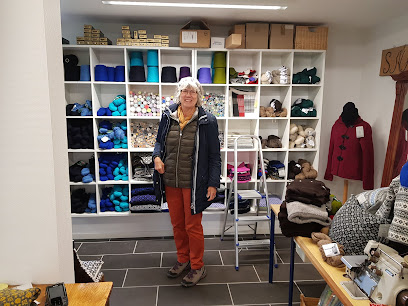
Essential bars & hidden hideouts
Fríða Kaffihús
Experience the perfect blend of Faroese cuisine and culture at Fríða Kaffihús, a must-visit restaurant and café in Klaksvík.

Irish Pub Torshavn
Immerse yourself in the warmth of Irish culture at Torshavn's beloved Irish Pub, offering traditional food, local brews, and a vibrant atmosphere.

Gjaargardur Guesthouse Gjogv
Discover the flavors of the Faroe Islands at Gjaargardur Guesthouse Gjogv, where local cuisine meets stunning natural beauty.

Toscana
Discover Toscana, Tórshavn's premier destination for authentic Italian cuisine, fresh seafood, and succulent steaks in a cozy atmosphere.
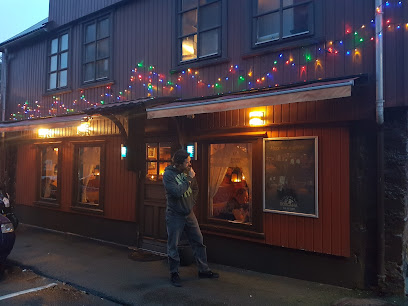
Sirkus Bar
Experience the vibrant nightlife of Tórshavn at Sirkus Bar, where locals and visitors unite over delightful drinks and lively entertainment.
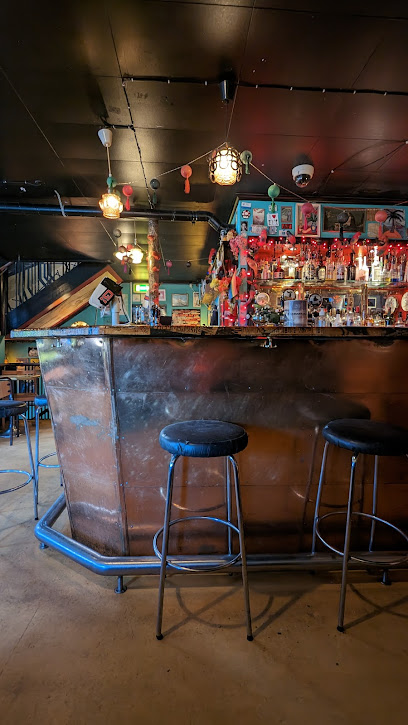
Mikkeller Tórshavn
Discover the vibrant craft beer scene at Mikkeller Tórshavn, where unique brews and a welcoming atmosphere await every visitor.

Kafé Kaspar
Discover Kafé Kaspar in Tórshavn, where delicious bagels and handcrafted coffee await in a cozy café atmosphere.

Bitin
Experience authentic Faroese cuisine at Bitin, a top Scandinavian restaurant in Tórshavn, where local flavors come to life.
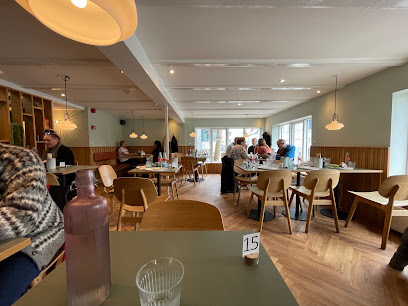
Suppugarðurin
Discover the authentic taste of Japan at Suppugarðurin, Tórshavn's premier ramen restaurant offering a unique culinary experience in the Faroe Islands.
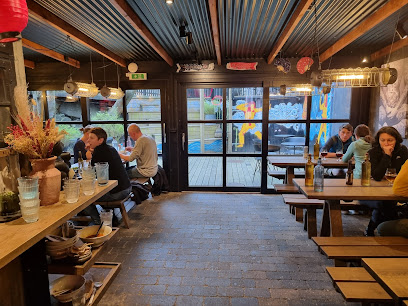
hvonn
Explore the rich flavors of the Faroe Islands at Hvonn, a must-visit restaurant in Tórshavn, offering a delightful culinary experience.
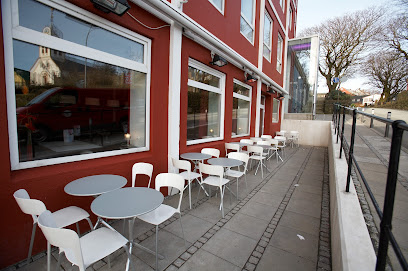
Brimborg
Discover Brimborg, where the authentic flavors of the Faroe Islands come alive in a cozy and welcoming restaurant setting.
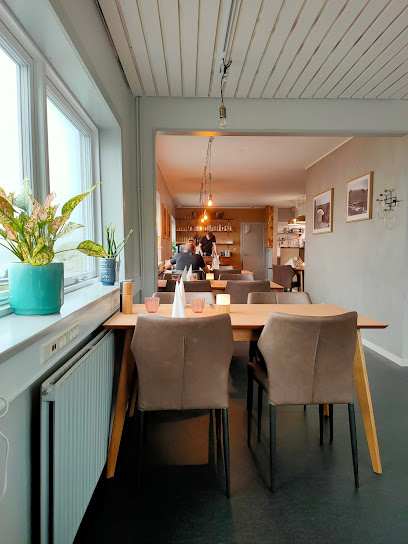
Take Away
Discover Tórshavn's best pizza takeout at Take Away, where fresh ingredients meet flavorful creations in a cozy setting.

Gómagott
Discover the irresistible world of handcrafted chocolates and cozy café vibes at Gómagott in Tórshavn, Faroe Islands.
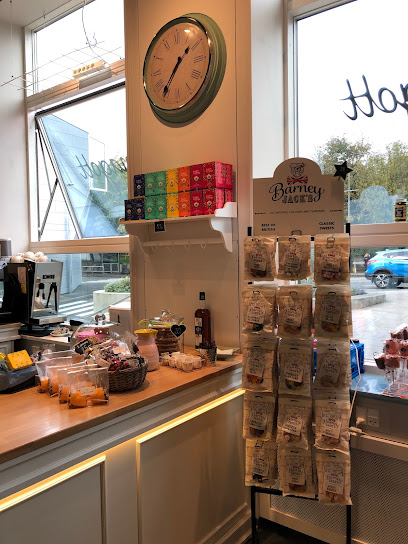
City Burger
Discover the flavors of fast food at City Burger in Tórshavn, where delicious meals meet a cozy atmosphere in the heart of the Faroe Islands.
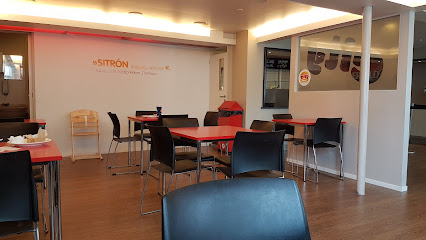
Glitnir
Experience the vibrant nightlife and local charm at Glitnir, Tórshavn's premier bar featuring a diverse drink selection and welcoming atmosphere.
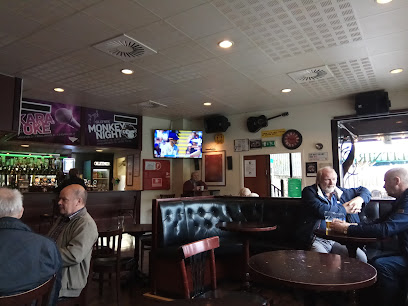
Local Phrases
-
- HelloHej
[hey] - GoodbyeFarvæl
[far-vel] - YesJa
[ya] - NoNei
[nay] - Please/You're welcomeVælkomin
[vel-ko-min] - Thank youTakk fyri
[tak fur-ee] - Excuse me/SorryFyrirgef mær
[fir-ir-gef mai-ar] - How are you?Hvussu gongur tað?
[hoo-su gon-gur tad] - Fine. And you?Gott. Og tú?
[got og too] - Do you speak English?Talar tú enskt?
[ta-lar too en-skt] - I don't understandEg skilji ikki
[eg skil-yi ik-ki]
- HelloHej
-
- I'd like to see the menu, pleaseEg vil síggja menu, vænluga
[eg vil see-ya men-oo, vayn-loo-ga] - I don't eat meatEg eti ikki kjøt
[eg et-i ik-ki shyut] - Cheers!Skál!
[skawl] - I would like to pay, pleaseEg vil gjalda, vænluga
[eg vil gyal-da, vayn-loo-ga]
- I'd like to see the menu, pleaseEg vil síggja menu, vænluga
-
- Help!Hjálp!
[hyalp] - Go away!Far burtur!
[far bor-tur] - Call the Police!Ring til løgregluna!
[ring til lur-eg-loo-na] - Call a doctor!Ring til læknin!
[ring til læk-nin] - I'm lostEg eri týstur
[eg er-i teest-ur] - I'm illEg eri sjúkur
[eg er-i shyu-kur]
- Help!Hjálp!
-
- I'd like to buy...Eg vil keypa...
[eg vil key-pa] - I'm just lookingEg lurkar bert
[eg lur-kar bert] - How much is it?Hvussu nógv kostar tað?
[hoo-su noyg kost-ar tad] - That's too expensiveTað er ov dyrt
[tad er ov deert] - Can you lower the price?Kanstu sætta prísin?
[kan-stu set-ta pree-sin]
- I'd like to buy...Eg vil keypa...
-
- What time is it?Hvussu nógv er klokkan?
[hoo-su noyg er klok-an] - It's one o'clockTað er eitt
[tad er ayt] - Half past (10)Hálvgilt (10)
[hallv-gilt (10)] - MorningMorgun
[mor-gun] - AfternoonEttermiðdagur
[et-ter-mid-da-gur] - EveningKvøld
[kvool] - YesterdayÍ gjár
[ee g-yar] - TodayÍ dag
[ee dah] - TomorrowÁ morgun
[a mor-gun] - 1Ein
[ayn] - 2Tvø
[tvoo] - 3Trý
[tree] - 4Fýra
[fee-ra] - 5Fimm
[feem] - 6Seks
[seks] - 7Sjey
[shay] - 8Átta
[ot-ta] - 9Niður
[nee-thur] - 10Tíggju
[tee-gyu]
- What time is it?Hvussu nógv er klokkan?
-
- Where's a/the...?Har er ein...
[har er ayn] - What's the address?Hvat er adressan?
[kvat er ad-dress-an] - Can you show me (on the map)?Kanstu vísa mær (á kortið)?
[kan-stu vee-sa mai-ar (aw kort-ith)] - When's the next (bus)?Nær kemur næsti (bussurin)?
[nair kem-ur nay-sti (bus-sur-in)] - A ticket (to ....)Eitt miða (til ....)
[ayt meeth-a (til)]
- Where's a/the...?Har er ein...
History of Gøta
-
Gøta, a small village on the island of Eysturoy in the Faroe Islands, has roots tracing back to the Viking Age. Archaeological evidence, including ancient stone structures and tools, indicates that the area was settled around the 9th century. The Vikings, known for their seafaring prowess, used Gøta as a strategic point due to its natural harbor and fertile land.
-
One of the most significant historical figures associated with Gøta is Sigmundur Brestisson. According to the 'Færeyinga Saga,' Sigmundur was a Faroese chieftain responsible for converting the Faroese people to Christianity around the year 999. His dramatic life story, filled with battles, betrayals, and exile, is deeply intertwined with the history of Gøta. Sigmundur’s efforts to spread Christianity began in Gøta, making it historically significant in the religious transformation of the Faroe Islands.
-
During the medieval period, Gøta became an essential part of the trade networks in the North Atlantic, particularly with the Hanseatic League. The village's strategic location and natural harbor facilitated trade and communication between the Faroe Islands and mainland Europe. This period saw Gøta prosper as a hub for fishing and trading, with goods such as dried fish being exchanged for grain, cloth, and other necessities.
-
The Reformation in the 16th century brought significant changes to Gøta, as it did to the rest of the Faroe Islands. The shift from Catholicism to Lutheranism was marked by the construction of new churches and the reorganization of religious practices. The village's church, which has been a focal point for the community, underwent modifications to align with Lutheran doctrines. This period also saw the consolidation of local governance and the establishment of new social structures.
-
In the late 19th and early 20th centuries, Gøta experienced a significant economic transformation due to the fishing industry boom. The introduction of modern fishing techniques and equipment led to increased fish catches, which in turn boosted the local economy. The village's proximity to rich fishing grounds made it a vital center for fish processing and export. This boom brought about infrastructural developments, including the construction of new buildings and improved transportation links.
-
The Faroe Islands, including Gøta, were occupied by British forces during World War II. This occupation had a profound impact on daily life, with fortifications and military installations being set up around the islands. The war years were marked by economic hardship and rationing, but they also brought about a sense of unity and resilience among the Faroese people. After the war, Gøta, like the rest of the Faroe Islands, began the process of rebuilding and modernizing its infrastructure.
-
Today, Gøta is a vibrant community that honors its rich history while embracing modernity. The village is known for its cultural events, including traditional Faroese chain dancing and music festivals. The local museum in Gøta offers visitors a glimpse into the village's past, showcasing artifacts and exhibits that narrate its historical journey. The community's strong sense of identity and pride in its heritage is evident in the preservation of historical sites and the celebration of cultural traditions.
Gøta Essentials
-
Gøta is located on the island of Eysturoy in the Faroe Islands. The nearest airport is Vágar Airport (FAE), approximately 70 kilometers away. From the airport, you can either take a taxi or a combination of buses to reach Gøta. The journey typically involves taking a bus to Tórshavn and then transferring to another bus that goes to Gøta. Alternatively, you can rent a car at the airport for more convenience.
-
Gøta is a small village, and many of its attractions are within walking distance. For longer trips, local buses are available and connect Gøta to other parts of the Faroe Islands. Taxis can also be arranged, but it is advisable to book them in advance. Renting a car is a convenient option for exploring the surrounding areas and offers flexibility in your travel plans.
-
The official currency in the Faroe Islands is the Faroese króna (DKK). Credit cards are widely accepted in hotels, restaurants, and shops in Gøta. However, it is still advisable to carry some cash, especially for smaller establishments and remote areas. ATMs are available in the nearby towns, such as Tórshavn, but may not be as common within Gøta itself.
-
Gøta is generally a very safe destination for tourists, with low crime rates. There are no specific high-crime areas targeting tourists. However, it is always wise to take standard precautions, such as not leaving your belongings unattended and being aware of your surroundings. The community in Gøta is friendly and welcoming to visitors.
-
In case of emergency, dial 112 for immediate assistance. The local police and medical facilities are available to help. For medical emergencies, the nearest hospital is in Tórshavn, about 30 kilometers away. It is recommended to have travel insurance that covers medical emergencies. For minor health issues, there are local pharmacies where you can purchase over-the-counter medications.
-
Fashion: Do wear comfortable and weather-appropriate clothing, as the weather can be unpredictable. Layering is advised. Avoid overly casual attire in more formal settings. Religion: Do respect local customs and traditions. Always behave respectfully when visiting churches or religious sites. Public Transport: Do be respectful to drivers and fellow passengers. Don't be loud or disruptive. Greetings: Do greet locals with a friendly hello or 'Góðan dagin.' A handshake is also customary. Eating & Drinking: Do try local dishes and accept food offerings graciously. Don't waste food, as it is considered impolite.
-
To experience Gøta like a local, visit the local markets and community events. Engage with the locals, who are often eager to share stories about their culture and traditions. Don't miss the Gøta Church and its beautiful surroundings. For a unique experience, take a hike in the nearby mountains, offering stunning views of the fjords and the village below. Also, consider visiting during a local festival to experience Faroese music, dance, and cuisine firsthand.
Trending Landmark in Gøta
-
Múlafossur Waterfall
-
Fossá
-
Skansin
-
Katrina Christiansen
-
Gjaargardur Guesthouse Gjogv
-
The Seal Woman (Kópakonan)
-
The National Gallery of The Faroe Islands
-
Tjóðsavnið (Faroe Islands National Museum)
-
Kallur Lighthouse
-
Toscana
-
Dúvugarðar Museum & Café
-
Bøsdalafossur Waterfall
-
Brell Café
-
Visit Torshavn
-
Klakkur
Nearby Cities to Gøta
-
Things To Do in Klaksvik
-
Things To Do in Strendur
-
Things To Do in Runavík
-
Things To Do in Hvalvík
-
Things To Do in Kvívík
-
Things To Do in Tórshavn
-
Things To Do in Vestmanna
-
Things To Do in Argir
-
Things To Do in Nólsoy
-
Things To Do in Sandavágur
-
Things To Do in Miðvágur
-
Things To Do in Sorvagur
-
Things To Do in Tvøroyri
-
Things To Do in Vágur
-
Things To Do in Seydisfjordur






